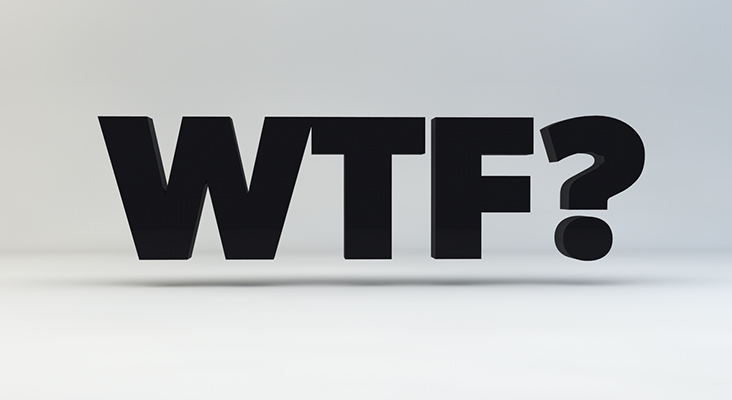Connect with execs from The New York Times, TIME, Dotdash Meredith and many more

This article is a WTF explainer, in which we break down media and marketing’s most confusing terms. More from the series →
Download Digiday’s complete WTF Programmatic guide, including 11 explainers detailing the ins and outs of programmatic advertising.
Someone mentioned deal ID in a meeting, and I nodded my head. WTF is it?
Deal ID, or deal identifier, is the unique number of an automated ad buy.
Terrific! Who cares?
Well, deal ID has emerged over the past two years as an important part of programmatic ad buying because it is used to match buyers and sellers individually, based on a variety of criteria negotiated beforehand.
What kind of criteria?
It can include the minimum price the advertiser is allowed to bid, type of ad units, section of the site, among others. You can pretty much tie it to anything.
Why is that important?
It’s critical that both buyers and sellers have flexibility, otherwise programmatic ad buying won’t include the full spectrum of ad deals that are often packages. Think of it as taking the best of auction buying and combining with the best of direct buying.
You meant to say “in theory.”
Of course. This is ad tech.
Give me an example of deal ID in action.
Say Condé Nast has a deal with Interpublic agencies working for Chrysler. In the open market, Condé isn’t into exposing inventory from its sites because it might undercut direct sales. Deal ID will allow it to cut a deal with IPG to allow it to see and bid on inventory from Condé sites that match auto shoppers.
So wait, I thought real-time bidding was all about auctions.
It is, but publishers don’t want to treat all buyers alike. That’s just how media works. Think of it this way, buyers come in many flavors. A publisher might want to give a better deal to a great customer. Or if you’re a buyer, you might want to specify the type of campaign objectives. For instance, a direct-response campaign to drive downloads is different from a brand-building effort.
Sounds like it involves humans.
Yes, sometimes robots need humans. And sometimes publishers want the efficiency of programmatic ad buying with the negotiations of humans.
Does this have to do with private exchanges?
Yes. Private exchanges allow for publisher control and direct connections with buyers, and deal ID is an added functionality that makes it easier to set up rules for deals.
Is this just about remnant inventory?
Hello, non-premium, please. And no, it is not. Deal ID should allow for publishers to specify the types of inventory available to different types of advertisers. It gives them more control, so it should give them a process for including their better inventory.
Sounds like what regular person-to-person ad deals do.
Deal ID has been called the automated version of the insertion order.
I thought insertion orders were the enemy.
True. But insertion orders are flexible. The buyer and seller can easily agree on many parameters of an ad deal.
Why is this needed?
Because it gives buyers and sellers flexibility while combining that with the dynamic pricing of real-time bidding.
Is this bad for publishers?
No, it shouldn’t be. Deal ID can be used by publishers to differentiate deals to a buyer’s objectives. It’s an improvement to a blind auction, that’s for sure. According to Casale Media, deal ID buys can command three times what the open market does.
Who is using deal ID?
Demand-side platforms like Turn, Invite and Mediamath. And private exchanges like those offered by Google, Pubmatic and The Rubicon Project and, soon, AppNexus.
Is this just for banner ads?
No, video supply-side platform LiveRail and video ad exchange SpotXchange are pushing this as an option for publishers using its tech to sell video ads. It’s moving to mobile too.
Hallelujah, this is the ad tech we’ve been waiting for!
Not so fast. There are deal ID detractors. Some — and they have their own biases here — claim that deal ID is flawed because it is still trying to retrofit the technology used for live auctions (RTB) with the very different dynamics of direct buys. AppNexus CEO Brian O’Kelley called it a “screwdriver and a nail.” Of course, AppNexus has since said it would build Deal ID functionality.
Why is nothing straightforward and simple?
Sorry, this is ad tech.
Where can I learn more?
Andrew Casale, vp of strategy at Casale Media, has written a great primer on Deal ID. (He also helped out a lot with this WTF.) Google’s DoubleClick Ad Exchange has a FAQ on its preferred deals option, including deal ID’s role. AdExchanger has a good rundown of Deal ID in this article. Programmatic guaranteed provider iSocket has a piece on the limitations of deal ID. And if you really want to go deep, there’s 21 minutes of video of Rubicon’s chief scientist talking deal ID at a whiteboard, a cult classic of the deal ID crowd.
More in Media

Three publishers’ workforce diversity reports show DEI efforts remain sluggish
Overall, staff diversity at The New York Times, Hearst and Condé Nast has either marginally improved or stalled in 2024, according to their annual workforce diversity data this year.

Retail media meets publishing: News UK, Future and Ocado tap clean room tech for smarter data targeting
News UK, The Independent, Immediate Media and Future are teaming up with retail media network Ocado to test clean room-powered data matching.

From sidelines to spotlight: Esports events are putting creators center stage
Esports events’ embrace of content creators reflects advertisers’ changing priorities across both gaming and the wider culture. In the past, marketers viewed esports as one of the best ways to reach gamers. In 2025, brands are instead prioritizing creators in their outreach to audiences across demographics and interest areas, including gaming.





